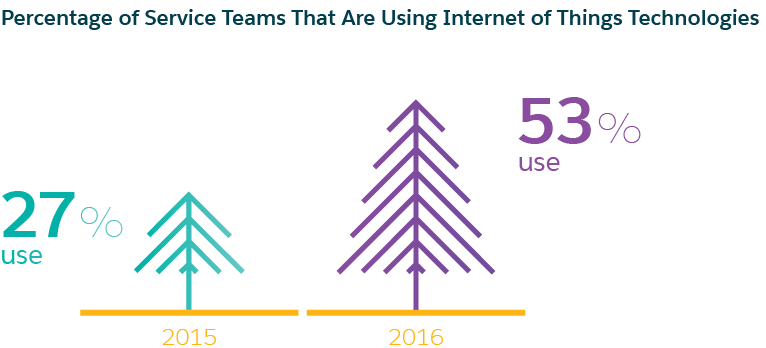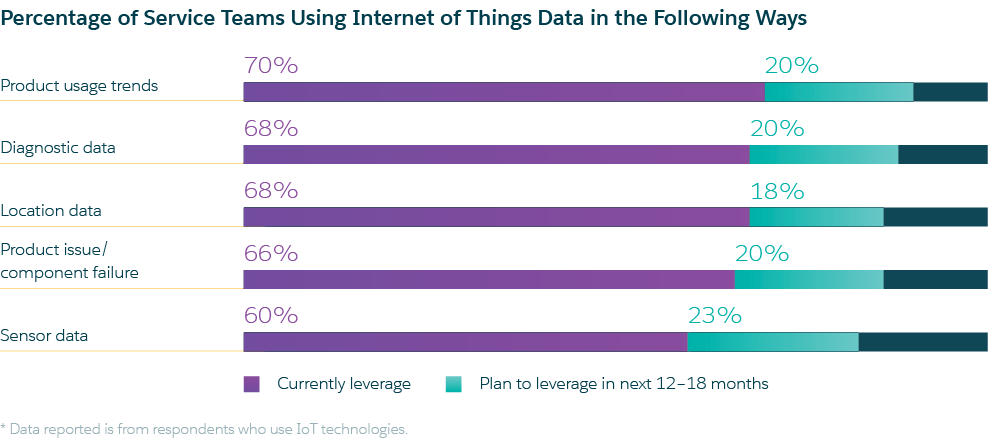
Get your FREE 30-day trial.
Please complete all fields.
At the 2017 Consumer Electronics Show, connected products ranged from the unusual (jeans that help you navigate) to the useful (smart fridges abound). As household and consumer products are increasingly wired for the Internet of Things (IoT), more customer service teams are likewise exploring how the IoT functions as a service channel.
In a new study, “Second Annual State of Service,” Salesforce Research found that service teams using IoT doubled from 2015 to 2016, from 27% to 53%. The IoT creates a whole new arena for how service agents are connecting with customers. The proliferation of connected-devices, the volume of data they produce, and the unique value of that data make the IoT a special area of interest for service leaders.

Here’s a personal example where I wish that a product would’ve had IoT/connected customer service capabilities. A surge in our home’s water pressure caused a crack in our water filtration system in the basement. By the time I found the leak there was already a small lake in the house. Now imagine if the water filtration system, via the IoT, had notified the installing company as soon as it detected an unsafe water pressure level. The water filter company could have proactively notified me, and the whole mess could have been avoided.
This level of proactive service not only earns customer loyalty — it's increasingly what connected customers expect from businesses. Another Salesforce Research report showed that more than half (51%) of customers expect companies to anticipate their needs and make relevant suggestions before they contact customer service. By 2020, consumers foresee technology innovations as increasingly integrated with the customer journey. For example, 58% predict that products will automatically self-diagnose and correct problems.
For service teams today, the most popular data types they’re using (or planning to use) for IoT purposes include product usage trends, diagnostic data, and location data.

High-performing customer service teams see the untapped potential in IoT as a service outlet. These top service teams are 4.1x more likely than underperformers to say the IoT/connected products will have a transformational impact on their service organization by 2020.
For more about customer service trends in 2017, get the complete “Second Annual State of Service” research report (free to download).